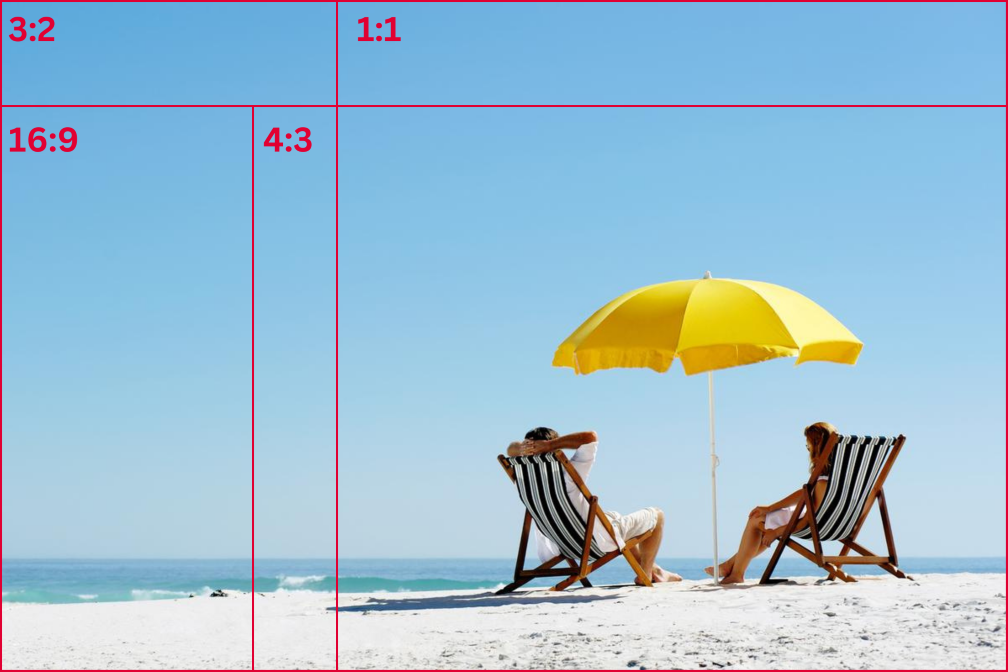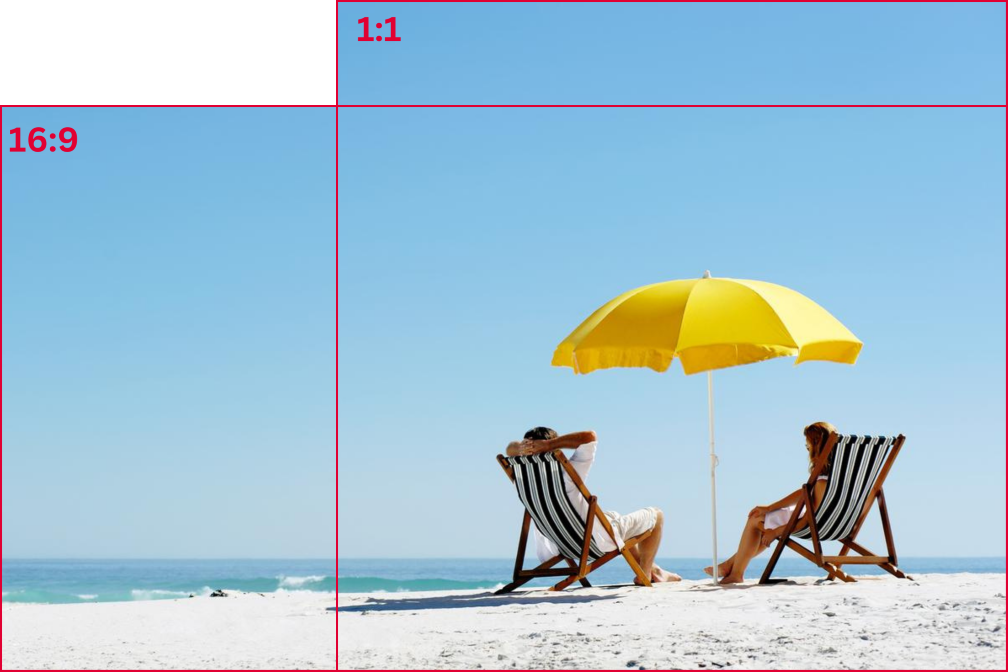
How to select the right aspect ratio for your images
Set the tone of your photos by selecting the right image ratio
Which aspect ratio you choose for your image can be the difference between a good image and a great one. Each image ratio has a specific aesthetic and can significantly influence the look of your image.
In this article, we will show you how to select the right aspect ratio for your images and which factors are important to keep in mind.
Spoilt for choice: confusion about image ratios
Initially, many photography enthusiasts may be confused when faced with the aspect ratio settings on their camera. Especially compact cameras offer users a lot of options to choose from when it comes to the ratio between the wide and the narrow sides of an image. You may end up asking yourself if it is it better to use a 4:3, 3:2 or even 16:9 ratio?
A brief history of aspect ratio
A brief look into the history of aspect ratio reveals that it is closely linked to the development of photography itself. Since the beginning of analogue photography, different aspect ratios have been used to capture images. These aspect ratios were influenced by the technical limitations and advancements of that time.
A small image ratio of 36x24 mm, which was introduced by Leica in the 1920’s, manged to establish itself as the predominant image ratio on the market. This led to certain standard image sizes in printing, such as a standard postcard size of 10x15 cm or a standard poster size of 40x60 cm. In addition to these, there are niche sizes, such as the square instamatic format . However, medium-format cameras tend to use a 4:3 ratio. There are also corresponding standards for paper sizes.
Many of these image ratios have been embraced by the ever-more popular digital photography scene. For example, DSLR cameras often use a 3:2 ratio and smaller digital cameras use a 4:3 image size. Smartphones and modern cameras now offer a variety of ratios such as 1:1, 4:3, 3:2 and 16:9, which gives you a lot of creative freedom in your photography.

Important factors when choosing an aspect ratio
When deciding on an appropriate image ratio for your picture, it is important to keep the intended purpose of the photo in mind. If you want to print the image right away, then a 3:2 ratio is a great choice. If you are not sure about which aspect ratio to choose, a good method is to first photograph a larger 4:3 ratio and crop the image afterwards to a 3:2 image size, or even to a 1:1 square.
Keep in mind that different aspect ratios conjure different visual impressions: a 3:2 generally has a more elegant and dynamic look to it, whereas a 4:3 size has a more compact feel.
A wide-angle format such as a 16:9 ratio is perfect for landscape and panorama shots. On social media, a square or portrait format is the most popular, whereas a ratio of 16:9 is optimal for computer screens. Ultimately, your personal taste plays the most important role. So, it is worth experimenting with different aspect ratios to get the perfect look for your image.
Tip
At ifolor you can order your prints in various image ratios. Depending on the aspect ratio setting of the photos you have taken, the size of your prints can vary.
Panorama and other creative image ratios
If you crop your images retrospectively to improve the composition of the shot, the new aspect ratio may not correspond with any standard sizes. However, this does not pose a major problem as paper prints can be cropped to any size. Nowadays, many cameras and virtually all smartphones have a practical panorama setting or apps which can be used to create spectacular wide-angle images. You can use these tools to capture impressive landscapes, cityscapes or interiors in their full scope. However, you should bear in mind that panorama shots look particularly good as large prints. Standard sizes are generally unsuitable for this image ratio, as they cannot depict the full scale of the image. A wonderful way to express your creativity is to make a panorama calendar or a large-format wall-hanging that shows off the full beauty and expanse of your shots. A panorama format also offers a great way to bring an unusual perspective and unique image compositions to life that would be difficult to achieve with a traditional image ratio.

Tip
It's a good idea to take a few extra pictures and crop them afterwards rather than risk losing an important detail. Taking a step back when taking a photo can also give you more creative freedom when editing the image later.
Conclusion: using aspect ratio as a creative tool
Which image ratio you choose is a question of personal style and what you intend to use your images for. Experiment with different aspect ratios to find out which format gives your images the look you want. Whether 4:3, 3:2, 1:1, 16:9 or a panorama format - every aspect ratio has its own aesthetic and can enrich your photography.
